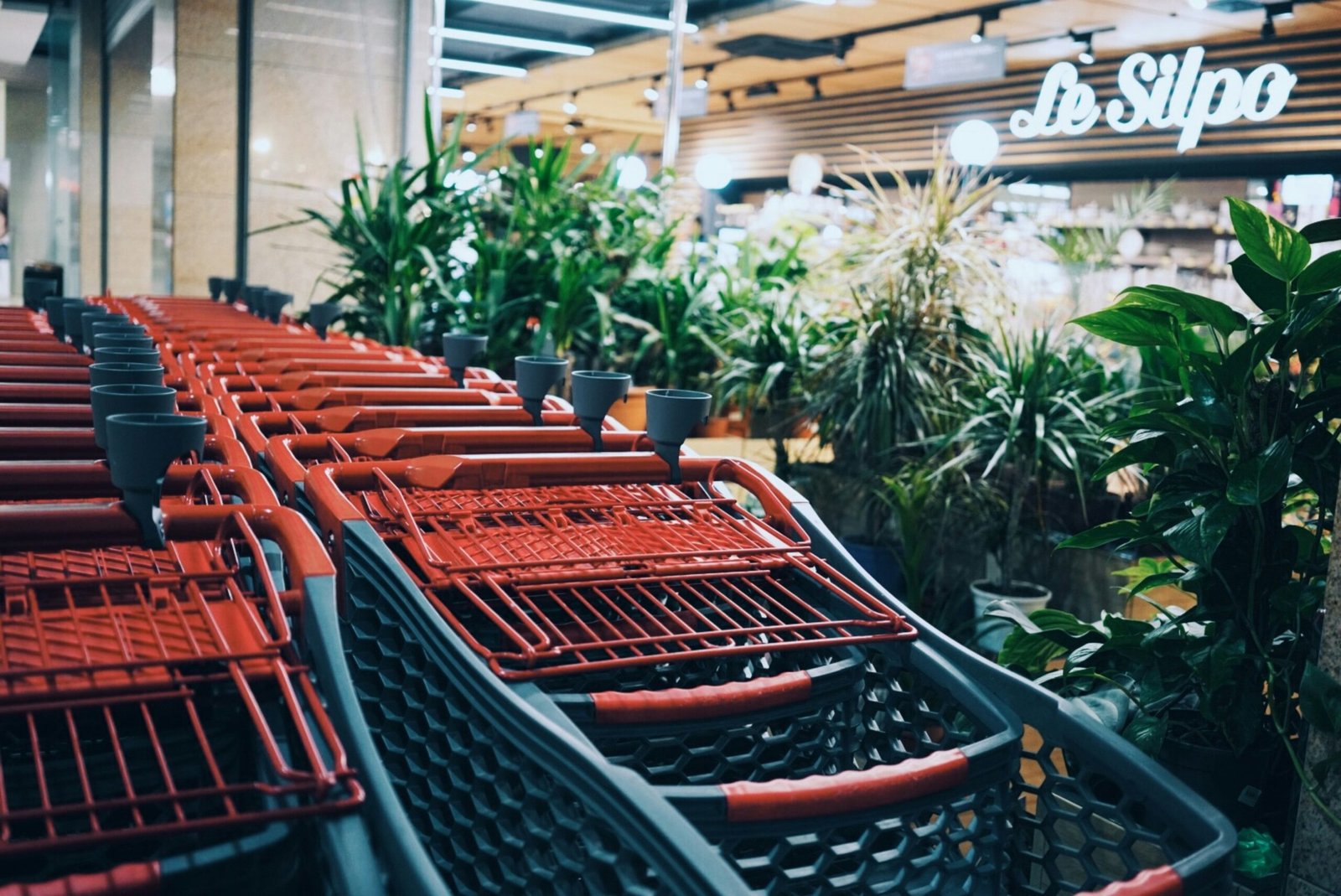Table of Contents
- 1 What are HS Codes?
- 2 Importance of HS Codes in Plant Export
- 3 Common HS Codes for Nursery Plants
- 4 How to Determine the Right HS Code for Your Plants
- 5 Challenges in Exporting Nursery Plants
- 6 Resources for Exporters of Nursery Plants
- 7 Trends in the Nursery Plant Export Market
- 8 Advice for New Exporters
- 9 Conclusion and Further Reading
What are HS Codes?
Harmonized System (HS) codes are a standardized numerical method of classifying traded products. Developed by the World Customs Organization (WCO), the HS code system enables countries to uniformly identify goods in international commerce. This system encompasses about 5,000 commodity groups, each referred to by a unique six-digit code, which serves both as a means for tariff and trade data organization and as a tool for monitoring trade patterns.
The primary purpose of HS codes in international trade is to facilitate the efficient collection of trade statistics and the assessment of tariffs. By classifying goods under a common set of descriptors, customs authorities can swiftly categorize and analyze products as they cross borders. The structure of HS codes is hierarchical, wherein the first two digits represent the chapter, the next two digits represent the heading, and the last two digits refine the classification further. For nursery plants, for instance, an HS code specifically designates this product category, easing the tracking of trade in plants across global markets.
The origins of HS codes date back to the late 19th century when they were introduced to create a framework for both customs and statistical purposes. Over time, the HS code system has evolved, with updates issued every five years to reflect changes in technology, product development, and international trade practices. The significant impact of HS codes extends beyond customs regulations—they are critical for the uniformity of trade data, allowing for transparent international commerce, and aiding exporters in understanding tariffs applicable to nursery plants or any other product they wish to sell internationally. The importance of adhering to accurate HS codes cannot be overstated, as incorrect classification can lead to delays and complications in the export process.
Importance of HS Codes in Plant Export
In the realm of international trade, the proper classification of goods is paramount, particularly for nursery plants. The HS code, or Harmonized System code, serves as a critical tool in this regard. It is a standardized numerical method of classifying traded products and plays a crucial role in determining tariffs, compliance with trade agreements, and facilitating customs clearance processes.
When exporting nursery plants, the appropriate HS code used for nursery plants must be accurately designated. This classification significantly impacts the duties and tariffs imposed by importing nations. Each HS code is associated with specific tariffs, and an incorrect classification can lead to unexpected costs, delays, or even penalties. Exporters must ensure that they use the correct HS code to avoid these pitfalls and to accurately assess the potential financial implications of their transactions.
Moreover, the relevance of HS codes extends beyond just tariffs. Each country adheres to various international trade agreements, which may stipulate different rules for goods depending on their classification. Proper use of HS codes helps exporters ensure compliance with these agreements, enabling smoother entry of goods into foreign markets. Failure to comply with these regulations can hinder market access, resulting in significant business losses.
Efficient customs clearance processes are also highly contingent upon the correct use of HS codes. Customs authorities rely on these codes to facilitate the quick processing of exports and imports. An accurate declaration of the HS code allows customs officials to assess the shipment more efficiently, expediting the entire logistics process. In nations where trade regulations are strict, such efficiency is not just beneficial; it is often necessary for a successful export operation.
In conclusion, the significance of understanding and utilizing the correct HS code for nursery plants cannot be overstated. It is essential for managing costs, conforming to international trade agreements, and ensuring efficient customs processes.
Common HS Codes for Nursery Plants
Understanding the classification of nursery plants through their HS codes is essential for exporters aiming to navigate international trade regulations. The Harmonized System (HS) provides specific codes that help in the proper identification of goods, including various types of nursery plants. These codes facilitate trade by streamlining customs procedures and establishing clear tariffs. In the realm of nursery plants, several common HS codes are frequently used.
One notable HS code is 0602, which encompasses live plants, specifically those that are cultivated for ornamental purposes. This category includes various flowering and foliage plants, such as orchids, ferns, and succulents. Exporters dealing with these types of plants should ensure their shipments are accurately classified under HS code 0602 to meet international customs requirements effectively.
Another key HS code for nursery plants is 0603, which pertains to cuttings, grafts, and slips of plants. This classification covers a variety of propagation materials, essential for nurseries focusing on growing new plants from established species. It is vital for exporters to recognize that any part of a plant intended for propagation must be labeled under HS code 0603 to avoid potential compliance issues when exporting.
In the context of edible nursery plants, HS code 0709 applies to vegetables and plants, excluding seeds and kits designed for culture. This code is crucial for exporters dealing with nursery plants that produce vegetables, such as tomato seedlings or pepper plants. By correctly applying the relevant hs code used for nursery plants, exporters can ensure that their products are clear and compliant in the global market.
Overall, accurate classification of nursery plants using HS codes is a critical step for exporters. By familiarizing themselves with these common codes, they can streamline their operations and better navigate the complexities of international trade.
How to Determine the Right HS Code for Your Plants
Determining the correct Harmonized System (HS) code for nursery plants is essential for exporters to ensure compliance with international trade regulations. The first step in this process involves familiarizing oneself with the structure of HS codes, where the first two digits represent the chapter, the next two the heading, and the subsequent digits the subheading. For nursery plants, these codes can typically be found within Chapter 6 or Chapter 12 of the HS nomenclature.
Exporters can begin their search by accessing government databases. Many countries offer online resources that list HS codes alongside descriptions of specific commodities. The World Customs Organization (WCO) and the customs authority in your country can be valuable starting points. These platforms provide detailed guidelines for classification, making it easier to locate the appropriate hs code used for nursery plants. Additionally, they often include updates on changes or amendments to the coding system.
Consulting trade experts or customs brokers can also significantly aid in determining accurate HS codes. These professionals possess extensive experience and knowledge regarding classification issues and can provide insights that may not be easily gleaned from online databases. They can help exporters understand nuanced details in plant classifications that could affect duty rates or import restrictions.
Moreover, utilizing reference materials such as the Harmonized Tariff Schedule (HTS) specific to your importing country can provide clarity. This document outlines all applicable HS codes and their duties, assisting exporters in making informed decisions. Depending on the type and variety of nursery plants, the hs code may vary, underscoring the importance of thorough research. By following these steps, exporters can ensure that they select the precise HS code for their plants, thus facilitating smoother trade transactions.
Challenges in Exporting Nursery Plants
Exporting nursery plants involves navigating a myriad of challenges, particularly concerning the correct classification of goods, adherence to phytosanitary regulations, and effective communication with customs authorities. One of the most pressing issues is the misclassification of nursery plants under the appropriate HS code. An inaccurate HS code can result in delays, increased costs, and legal complications. Exporters must ensure they utilize the correct HS code used for nursery plants to avoid these pitfalls. This requires a comprehensive understanding of the diverse categories of plants, as well as the specific terminology used in international trade.
Compliance with phytosanitary regulations presents another significant challenge. Each country has its own standards regarding the health and safety of exported plants. These regulations are designed to prevent the spread of pests and diseases. Exporters must familiarize themselves with both the destination country’s phytosanitary requirements and their local regulations. Obtaining the necessary phytosanitary certificates can be time-consuming but is essential for compliance. Failure to address these regulations can result in shipment rejections or penalties.
Additionally, exporters must contend with the complexities of working with customs authorities. Different jurisdictions have varying levels of efficiency and transparency which can complicate the export process. Unexpected delays at customs checkpoints can halt operations, jeopardizing fresh inventories and damaging plants. Establishing good relationships with customs officials and hiring experienced brokers can help facilitate smoother transactions.
To mitigate these challenges, exporters of nursery plants should invest in proper training and resources. They should stay updated on relevant laws, join trade associations, and utilize technology that streamlines documentation processes. Understanding the intricacies of the HS code used for nursery plants and ensuring compliance with regulations will enhance their ability to overcome obstacles in the exporting landscape.
Resources for Exporters of Nursery Plants
Exporting nursery plants requires compliance with various regulations and an understanding of the relevant HS code used for nursery plants. To facilitate this process, exporters can utilize a variety of resources that provide essential information and guidance. Government websites often serve as a primary resource for exporters, outlining the regulations, necessary documentation, and tariffs associated with international trade. For instance, the U.S. Customs and Border Protection and similar agencies in other countries maintain comprehensive databases that include HS codes relevant to nursery plants, allowing exporters to identify the correct classifications for their products.
Trade associations are another important resource for those involved in the nursery industry. Organizations such as the American Nursery and Landscape Association (ANLA) and the International Plant Propagators’ Society (IPPS) offer support through educational resources, seminars, and networking opportunities. These associations create platforms where exporters can gain insights into best practices in horticulture, trade regulations, and market trends affecting the horticulture sector. Participation in such associations can also assist exporters in staying informed about changes in HS code classifications and trade policies that may impact their business.
Online platforms dedicated to agricultural trade and e-commerce provide another valuable resource for nursery plant exporters. Websites like nurserykart.in not only offer a marketplace for purchasing plants but also share information on shipping regulations and compliant practices associated with HS code use for nursery plants. These online resources can streamline the purchasing process and help exporters connect with reliable suppliers while ensuring adherence to global trade standards.
Overall, harnessing these resources can significantly enhance a nursery plant exporter’s ability to navigate the complexities of international trade, comply with regulatory requirements, and ultimately succeed in the global marketplace.
Trends in the Nursery Plant Export Market
The nursery plant export market is experiencing a notable transformation, influenced by various trends that reflect changing consumer preferences and market dynamics. One prominent trend is the growing demand for exotic plants. As consumers increasingly seek unique and rare species, exporters are adapting their offerings to meet this desire, resulting in a greater variety of plants being classified under specific HS codes. This shift not only influences trade practices but also impacts the types of plants that exporters choose to cultivate and sell internationally.
Another significant trend that is taking center stage is the emphasis on sustainable practices within the industry. With heightened awareness of environmental issues, both consumers and businesses are prioritizing sustainability in their purchasing decisions. This shift has prompted many nurseries to adopt environmentally-friendly production methods and to work closely with suppliers who share similar values. As a result, the classification of nursery plants under HS codes may reflect attributes pertaining to organic certifications or eco-friendly practices, leading to new categories within the existing classification system.
Furthermore, shifts in consumer preferences are influencing the nursery plant export market in substantial ways. An increasing number of consumers are leaning towards houseplants and indoor gardening, boosting demand for those specific classifications within the HS code framework. This trend not only redefines what is exported but also calls for exporters to remain vigilant about the classification process. Understanding the HS codes used for nursery plants allows exporters to navigate customs regulations more effectively and stay aligned with present market trends. As the nursery plant industry evolves, it is imperative for exporters to adapt to these trends while ensuring accurate HS code classification for smooth international trade.
Advice for New Exporters
Entering the nursery plant export market can be both promising and challenging, particularly for new exporters unfamiliar with the intricacies of this sector. To successfully navigate the complexities involved, it is essential to understand the importance of HS codes, which classify goods traded internationally. The hs code used for nursery plants specifically identifies these items and ensures compliance with international trade regulations.
One of the best practices for new exporters is to thoroughly research and understand the relevant regulations governing the shipment of nursery plants. This includes ensuring compliance with phytosanitary certifications required by importing countries. The correct hs code for nursery plants not only facilitates customs clearance but also helps in minimizing potential delays associated with inspections. Therefore, maintaining accurate documentation, including the appropriate hs codes, is crucial for each shipment.
Quality control should remain a top priority throughout the export process. Periodic checks are essential to ensure that the nursery plants meet the safety and quality standards expected by foreign markets. Poor quality can lead to customer dissatisfaction and harm long-term business relationships. Regularly assessing the quality of plants before shipment not only adheres to compliance requirements but also enhances the exporter’s reputation.
Moreover, logistics management is a vital aspect that new exporters must not overlook. Selecting the right shipping partners and understanding transportation options can help reach customers efficiently. Keeping abreast of shipping regulations related to nursery plants will also benefit exporters, as it permits better planning and execution of logistics strategies.
Lastly, building strong customer relationships is fundamental. Engaging with buyers through regular updates and feedback sessions can foster trust and facilitate repeat business. An understanding of hs codes and effective communication about compliance issues will further strengthen these relationships, leading to greater success in the nursery plant export sector.
Conclusion and Further Reading
In conclusion, understanding HS codes, specifically the HS code used for nursery plants, plays a pivotal role in the successful exportation of these products. These codes are integral to international trade, as they classify goods and ensure compliance with global tariffs and regulations. Utilizing the correct HS code for nursery plants enables exporters to navigate the complexities of international trade, minimizing the risk of delays or fines associated with misclassification.
Moreover, accurate classification using HS codes helps in streamlining customs procedures, making it essential for exporters to familiarize themselves with the specific codes related to nursery plants they intend to export. Whether engaging in the export of seeds, live plants, or cuttings, knowing the relevant HS codes enhances operational efficiency and fosters smooth trade relationships across borders. The varied nature of plants and their classifications necessitates attention to detail, and exporters should always verify the appropriate codes applicable to their products.
For those looking to expand their knowledge further, a wealth of resources is available online. Reading material on customs procedures, export documentation, and market-specific requirements will complement your understanding of HS codes. Additionally, engaging with industry experts and staying updated on regulatory changes is advisable for exporters in the nursery plant sector.
For your purchase of nursery plants, consider visiting nurserykart.in, an online platform that supplies a diverse selection. This can be an excellent opportunity to apply your knowledge of HS codes in the practical aspect of sourcing reliable nursery plants for both personal and business needs.










